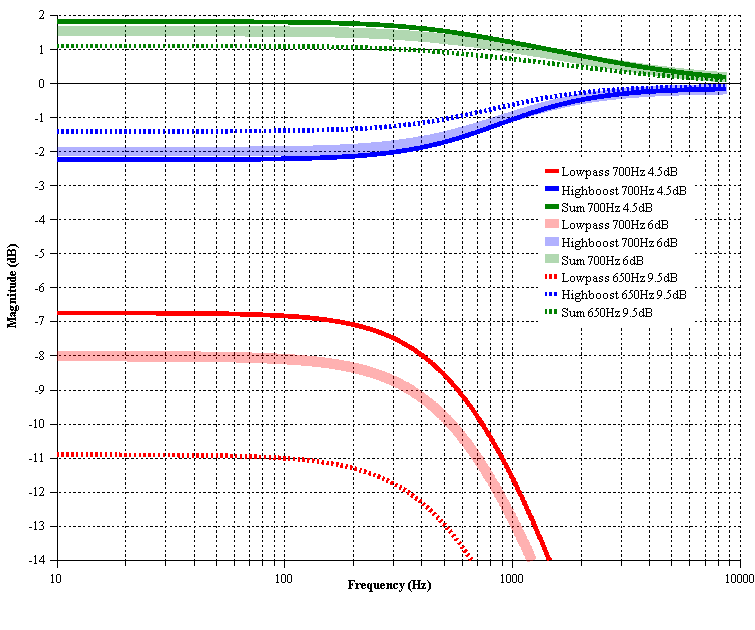
For that I use the highest level of crossfeed the plugin offers. Beatles albums, for example, are stereo mixed in a way that hard pans different instruments to different ears, and in headphones it doesn't sound right. There are some types of music that does benefit from heavy amounts of crossfeed. My goal is to find a configuration that sounds as close as possible to how it sounds without crossfeed, while making those moments of "just right/left ear" be a bit more spread out. The only thing that bothers me is where the music stops and there is an instrument (guitar most of the times) that plays in just one ear.
#Crossfeed headphone software#
I 'auditioned' the OOYH software (which some really like) but found it sounding very Don't get me wrong, I like the wide stereo effect of headphones (in most music). Never played with realisers and digital crap. I don't mind the sharp pinpointed stereo width in my head. The same won't be true for others who may like it even wider or prefer using crossfeed ( is a big crossfeed fan). for me it was a fun experiment that gave some improvements sometimes with some music but after 'accepting' stereo through headphones preferred the sound without any crossfeed. When I switched it on again I did not like it as much and got used to the wider sound and preferred that for headphones. Later I noticed I had listened to music without any crossfeed (had switched it off in the back and did not know/remember). I ended up with a very mild crossfeed which worked reasonably well with most recordings. The problem I encountered was there seemed to be no setting that worked really well with all recordings. Played with it for a long time to find my personal optimal 'version'. I experimented with crossfeed (analog only) and with many variables. This is the chain of commands that achieved it: I played around with parameters until I achieved a filter that doesn't affect the frequency response (unlike what this plugin does, where all configurations result in elevated lower end), and was unnoticeable enough to not affect the soundstage in regular music, while still accomplishing the goal of eliminating hard panned sounds. After some fiddling around, I managed to do that ,and validated it with loopback recording in Audacity using a chirp, to confirm that I achieved the same effect as the plugin. Is the cutoff frequency when the high shelf filter begins? Is it it's center frequency? What is its slope? And what does the crossfeed level mean? It's a 9.5 db boost/cut of what exactly?Īnyway, I did try to replicate that plugin's effect using the built in commands and filters in the interface. I vaguely understand how these affect the narrowness of the perceived soundstage, but I would be glad if someone with real knowledge could tell me what these parameters actually mean. the cutoff frequency here is 650 hz, while in the narrower option it's at 700 hz. Here it's at 9.5 db, and in other configurations it's as low as 4.5. For example:Ī higher crossfeed level gives more separation. The plugin interface gives basic information on the different parameters, but I don't quite understand what those parameters mean. I suppose this gives a more realistic sound, because it imitates how low frequencies are less directional than high ones. I generally understand it's function and how it differ from a simple copy between channels – it copies one cannel's information to the other one while applying a high-shelf filter, thus resulting in more crossfeed in the lower frequencies and less in the higher ones. I found a VST plugin that I could apply in EQ APO named "BS2BR", that had 4 levels of crossfeed. So I tried to delve into more complex crossfeed arrangements. I played around with the ratios, and while it did manage to eliminate hard panned sounds, it sounded kind of unnatural and hurt the soundstage width too much. For example, R channel having 90% of R audio and 10% of L audio, and vice versa. The first attempt was a simple copy between channels.
#Crossfeed headphone full#
I don't have the Peace interface, and while I've heard it contains some sort of crossfeed option, I would like to have full control on what the crossfeed filter actually does, so I'm trying to make one manually using the available commands.

What I have to work with is EqualizerAPO. Of course, in speakers there is some leakage to the other ear so it's much more tolerable.

In headphones it sounds unnatural and irritating because it's isolated to only one ear. The main issue I'm trying to resolve is avoiding sounds that are hard panned to one side. I've been experimenting lately with crossfeed with my headphones.


 0 kommentar(er)
0 kommentar(er)
